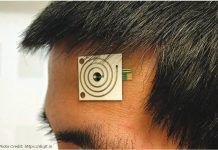
Invisibility, once the subject of magic or legend, is slowly becoming reality.
Over the past five years, mathematicians and other scientists have been working on devices that enable invisibility cloaks – perhaps not yet concealing Harry Potter, but at least shielding small objects from detection by microwaves or sound waves.
An international team of researchers, which includes Professor of Mathematics Allan Greenleaf from the University of Rochester , has come up with a process that would allow practical applications to be performed in a cloaked ( invisible) environment.
While cloaking might be advantageous for teenage wizards, it would have drawbacks in a science lab, the very place where cloaking would first be developed.
For example, a researcher needing to take precise sound pressure measurements inside a chamber faces two challenges. First, the very presence of a probe inside the chamber would subtly alter the acoustics of the environment, making accurate readings impossible. Second, if the probe could be perfectly cloaked, information on the outside would be unable to enter the cloaked environment, making it impossible to take any readings at all.
The key would be to create a state of “approximate cloaking,” which would hide the probe while letting in just enough sound waves that can be amplified in order for measurements to be taken.
The researchers have devised such a system, which they’ve dubbed “Schrödinger’s hat,” referring to the famed Schrödinger’s cat in quantum mechanics. The name is also a nod to the ability to perform a task—or create something—with what appears to be nothing.
The findings have been published in the current Proceedings of the National Academy of Sciences.
“What sets this apart from a conventional cloak design is the precise balance between the energy of the wave entering the cloak and the excitation on the inside,” said Greenleaf. “This balance allows the data to be encoded as a highly excited state.”
The research team includes Greenleaf and three other mathematicians: Gunther Uhlmann at the University of Washington, Yaroslav Kurylev at University College London in the United Kingdom, and Matti Lassas at the University of Helsinki in Finland.
The team helped develop the original mathematics to formulate cloaks, which require a class of engineered materials, dubbed metamaterials, capable of bending waves so that it appears as if there was no object in their path. In 2007, the group also devised wormholes, in which waves disappear in one place and pop up somewhere else.
For this paper, they teamed up with co-author Ulf Leonhardt, a physicist at the University of St. Andrews in Scotland and author on one of the first papers on invisibility.
Now that the paper is published, the research team hopes to find collaborators to build a prototype system capable of cloaking a measuring device.
The research was funded by the National Science Foundation in the U.S., the Engineering and Physical Sciences Research Council and the Royal Society in the U.K., and the Academy of Finland.



